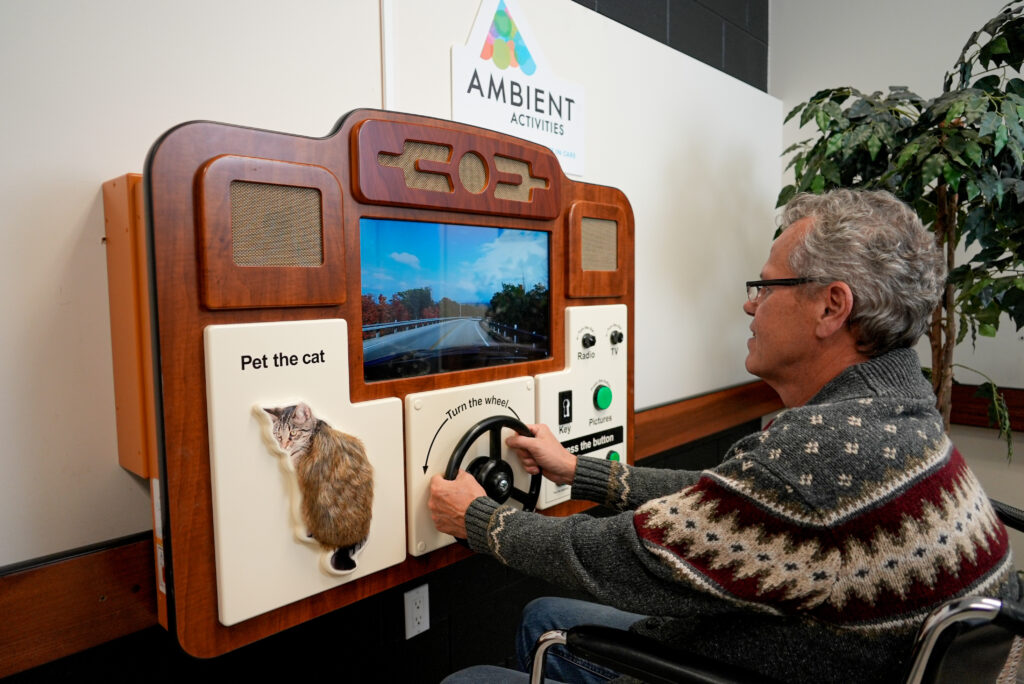

Boredom, loneliness and a loss of ability to do things independently leads to behavioral issues and isolation.
ABBY promotes independence, emotional well-being, cognitive stimulation, and physical activity.
ABBY is Ambient Activity – mounted to a wall, easy to access, and available to a resident on a 24-7 basis when care-staff is not available. Based on Montessori principles, ABBY invites residents to engage in activity they can easily do themselves with their remaining abilities and interests.
Appearing nostalgic and familiar, ABBY guides a resident to pet the cat with a surprise outcome. Turn the wheel to find themselves driving on a lovely country road. Turn the radio knob to discover a favourite song! There are games to play and plenty of stimuli to uncover.
ABBY is clinically proven Dementia-Care technology.
- Reduces reactive behavior (e.g., wandering, vocalizing)
- Promotes independent engagement in meaningful activity for people living with dementia.
- Alleviates staff burn-out often reported in memory care-care homes.
ABBY is a non-pharmacological dementia-care intervention.
Watch Video:
AMBIENT ACCESS Customer Portal
Person centered care
When an identified resident interacts with ABBY, familiar pictures, videos, songs and messages provided by family members are played. Residents can independently relive memories. When absorbed in personal memories, residents are in the moment — calmed and engaged.
ABBY is proven to enhance family visitation and care-staff involvement with a resident.
ABBY provides savings to Health Care Systems
- The estimated Social Return on Investment (SROI) shows a base case scenario of $3.9 of social value generated for every $1 invested in ABBY implementation after one year, $7.6 after two years, and $11.2 of social value for every $1 invested in ABBY implementation after three years of use.
The measure of cost savings to the public health care system – a joint study by UNB Saint-John/UdeMT — ABBY SROI-Cost Benefit Evaluation.


